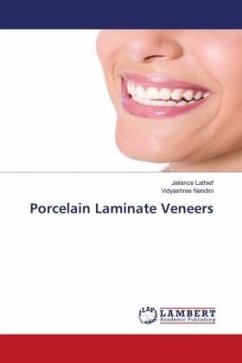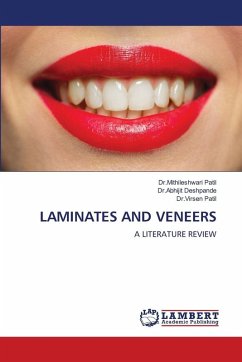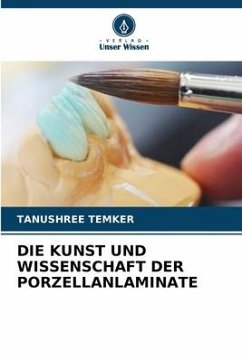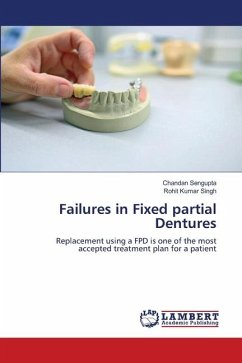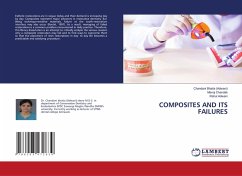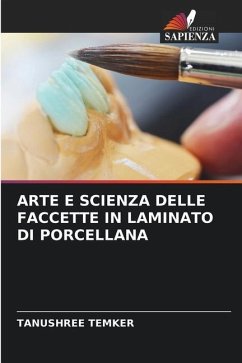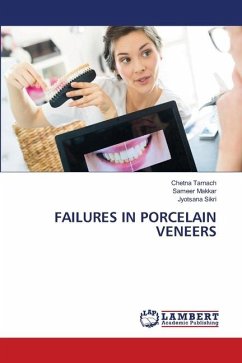
FAILURES IN PORCELAIN VENEERS
Versandkostenfrei!
Versandfertig in 6-10 Tagen
29,99 €
inkl. MwSt.

PAYBACK Punkte
15 °P sammeln!
The interest in porcelain veneers has followed the trend in restorative dentistry to conserve natural tooth structure. Since it enables preservation of more tooth structure compared to full crown restorations. PLVs are most commonly recommended for masking mild to moderate tooth discoloration, improvement of the shape of teeth, and closing teeth diastema. Although preserving more tooth structure, PLVs are not without problems, and different factors can influence the survival rate of these restorations. So, this book enlightens the failure of PLVs that can be manifested by several biological an...
The interest in porcelain veneers has followed the trend in restorative dentistry to conserve natural tooth structure. Since it enables preservation of more tooth structure compared to full crown restorations. PLVs are most commonly recommended for masking mild to moderate tooth discoloration, improvement of the shape of teeth, and closing teeth diastema. Although preserving more tooth structure, PLVs are not without problems, and different factors can influence the survival rate of these restorations. So, this book enlightens the failure of PLVs that can be manifested by several biological and mechanical problems, such as porcelain fracture, debonding, periodontal disease, caries, andtooth fracture. Thus to prevent the failure of the porcelain laminate veneers utmost care should be taken while preparation of the tooth, handling and bonding of the porcelain laminate veneers following all the recommended steps significantly to increase the success rate.





